
If you would’ve told me two months ago that not only would I *like* Ms. Marvel more than Obi-Wan, but that the show would be infinitely better than the latest Star Wars offering, I would’ve told you’d certifiably lost your mind.
And yet here we are. I have watched 5 episodes of Obi-Wan and 2 episodes of Miss Marvel. And Miss Marvel is executed better in every conceivable way. Today I want to discuss the screenwriting reasons for why that is so that you, dear writer, make more Ms. Marvels, and less Obi-Wans.
Let’s start with the concepts for each show because each is utilizing a time-honored trope, which means there isn’t any originality in the concept of either show. Obi-Wan utilizes the “Taken” trope – a young girl has been taken and he must save her. Ms. Marvel utilizes a “being unpopular in high school” trope.
If you haven’t seen Ms. Marvel, a young high school girl who idolizes superheroes finds an old bracelet in the family attic that gives her superpowers. So while she’s the world’s biggest dork at school, she secretly becomes a superhero herself.
Why does Ms. Marvel’s cliched setup work and Obi-Wan’s doesn’t? Well, with Obi-Wan, we literally just saw a similar setup with another Star Wars show – The Mandalorian. The Mandalorian protects a little kid, who also gets kidnapped, and who our lead also must retrieve. In other words, nothing about Obi-Wan’s setup feels new or fresh.
Meanwhile, Ms. Marvel leans heavily into Kamala’s culture, which is Pakistani. Now I don’t know about you. But I’ve never seen a high school movie where the main character is Pakistani. And what Ms. Marvel does a great job of is leaning into that culture and exploring the ways in which it affects Kamala’s life.
For example, the Muslim religion is a lot more conservative and, therefore, Kamala can’t wear the sexy things that get girls attention at school, that help them get boyfriends and increase their popularity. So the religion and the culture aren’t just a thin coat of paint. They deeply affect how our hero lives. All of this helps the show feel fresh and new.
Another way the show differentiates itself from Obi-Wan is through the relative importance of this moment in Kamala’s life. For Kamala, this is the single most important thing that’s ever happened to her. She is becoming a superhero. It doesn’t get much bigger than that.
With Obi-Wan, this is nowhere near the biggest moment of his life. He defeated Anakin in Episode 3. That was one. He helped take down the Death Star in Episode 4. That was two. And if we’re to believe all the stories we’re told, he’s done a lot of other big things as well. This is conceivably the 10th, maybe even 15th, most important adventure he’s ever had. Which is why the show constantly feels unnecessary.
As shocking as this might be to hear, Ms. Marvel is also a way better character than Obi-Wan. I can’t believe I typed that sentence so let me clarify it. Ms. Marvel is a better character than THE VERSION OF OBI-WAN THEY GIVE US IN THIS SHOW.
Why is that?
Well, one of the most powerful character types you can create – the character that’s most likely to make people fall in love with your character – is the underdog. Audiences love underdogs. As it so happens, both protagonists in these shows are underdogs. But one underdog we love. And the other we could care less about.
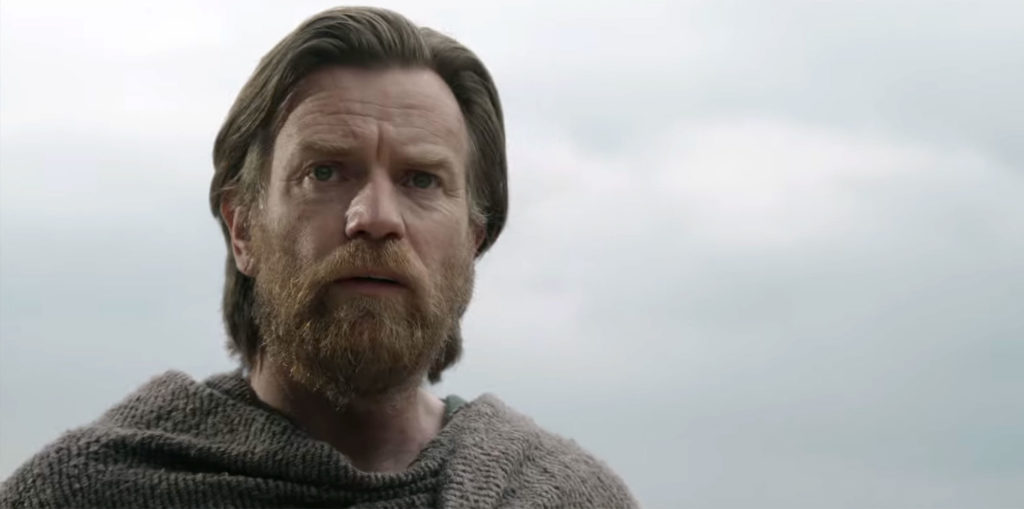
The issue with Obi-Wan’s underdog is that it’s inauthentic. Obi-Wan is made to be this washed up loser who keeps his head down and doesn’t remember how to use the force. Everything about it is manufactured. It doesn’t feel genuine at all. They needed to make him this way to create some semblance of an arc for the series. In order to “get his mojo back” he must overcome his sad sack ways.
Granted, this issue is complicated by things outside the Star Wars writers’ purview. They have a highly restrictive character canon they must work within. But that’s not an excuse. If you don’t have leniency to create a character we like, then don’t make the show. You don’t get to make a show then cry that you had all these restrictions. If you’re going to say, “Watch this,” then you have to stand by the choice you made to bring back a character who doesn’t have anything left to explore.
On the flip side, Kamala’s underdog-ness is excessively authentic. It’s not easy wearing drab clothes that cover your whole body when 99% of your classmates are dressed to attract attention. It’s going to increase the chances that you’re ignored or made fun of. Plus you have this cultural background that not a lot of people understand, which makes you even more of an outcast and, therefore, more of an underdog.
Everything about Kamala’s underdog status feels natural. There aren’t any forced aspects to it. This is something all writers need to watch for. Are you trying really hard to make the audience feel a certain way? If so, the audience probably detects that. And the second someone detects that you’re trying *really hard* to make us like your character, that’s the second we stop liking your character.
Speaking of manipulation, who would’ve thought that a Marvel show aimed at teens would be 1000% more nuanced than a Star Wars show? When Reva bursts out of her ship in her introductory scene in Star Wars, looking for Jedi on Tatooine, she does so with all the subtlety of Happy Gilmore.

I’m two episodes into Ms. Marvel, and the only villain so far is Instagram star, Zoe Zimmer. Zoe has so far been highly nuanced. She’s obsessive about her IG account, yes, but she’s quite friendly towards our hero. This is what a villain should be. They should have bad traits, but also good ones. Even “Obi-Wan’s” late season attempt to explain why Reva’s so angry doesn’t justify her rage. Nothing about her feels organic.
This speaks to a larger problem with Obi-Wan, which is that it’s writing as much to fix problems as it is to create entertainment. It has to weave through so much mythology and plot that it can’t help but feel forced. You can tell that Ms. Marvel has way more freedom in its narrative. The writers can go anywhere they want and, therefore, all they have to focus on is entertaining us.
By the way, this issue can pop up in stories other than those with sequels and extensive mythologies. If you write any kind of story where you’re trying to do too much, your writing will dissolve into the same thing that’s killing Obi-Wan. You’re writing to avoid problems instead of create entertainment.
We saw a gigantic example of this at the beginning of the week, in Jurassic World Dominion. The reason that movie felt so boring was because the writers had to spend the whole time navigating the thick-as-molasses plot rather than just write fun sh*t. There’s a reason they had so much fun with that Dino-motorcycle chase. It was the only scene where they were allowed to let loose and not worry about anything.
There are other things I love about Ms. Marvel as well, which I’m now anointing as the best Marvel show so far. I love that there’s a personal reason for keeping her superhero identity a secret. It’s well-established that her family doesn’t want a daughter who does anything out of the norm. So even if Kamala wanted to tell all her classmates (and the rest of the world) that she was a superhero, she still would’t be able to. There’s no way her parents can ever find out about this or they would disown her.
And that makes this one of the best “has to keep my secret identity” superhero movies/shows yet. I never bought for a second that Peter Parker needed or wanted to keep a secret identity. Honestly, who cares if people know he’s Spider-Man? But with Kamala, since the reason is so personal, you root harder for her to remain anonymous.
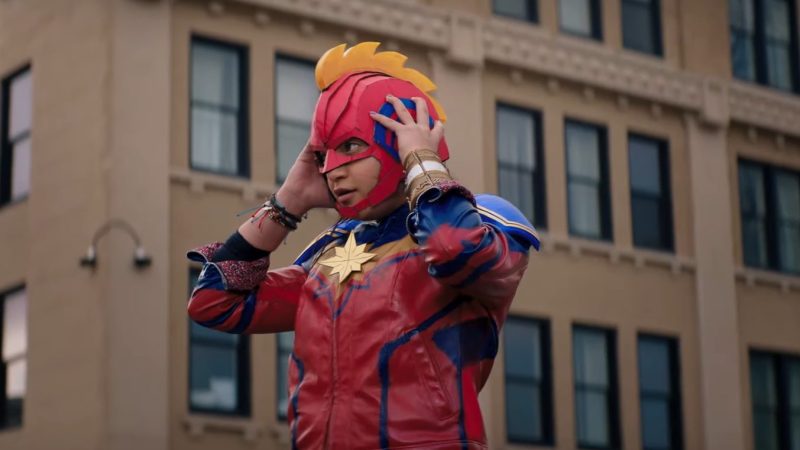
There’s also the costume. When I saw the costume in the trailers, I thought, “oh boy, they’ve really hit the bottom of the barrel with superhero shows.” But when you watch the show, you realize that Kamala is the world’s biggest superhero fan. Her dream is to go to Avengercon in cosplay. So she makes that suit herself. Which is why, of course, it’s imperfect. It’s another thing about the show that feels organic, rather than forced.
And the show explores this notion of Instagram celebrity obsession better than any show or movie I’ve seen so far outside of Eighth Grade. Imagine that you want to be popular more than anything. And you have all these people around you who have Instagram accounts that are semi-popular and it makes people like them and boy would it be great if you could somehow have a popular IG also, which would get you more friends and a boyfriend. Then you become a superhero, something that would allow you to have the biggest IG following ever. Yet you can’t tell anybody. The show does a great job showing how frustrating that is for Kamala.
I can’t believe I wrote this article, guys. In a way, it’s cool, cause I found a new show I like. But in another way, it’s sad. Because it shows how far Star Wars has fallen. This is one of their most popular characters and they’ve essentially neutered him. They have to now hope that everybody simply forgets this show existed if they’re to preserve Obi-Wan’s name.
But in order to send the site into the weekend on a high note, I will say that the Vader-Reva lightsaber battle at the end of the latest episode was the best lightsaber battle in all of Star Wars so far. It was really creative. I just wish they would’ve brought more of that creativity to the storytelling.
Genre: Drama/Crime
Premise: An Australian heroin-addict prisoner escapes to Mumbai to disappear, before cozying up with the local mob to make ends meet, and falling in love with a fellow criminal.
About: Shantaram is widely considered to be one of the top 10 books that have not been adapted into a movie or a TV show. After 20 years, all that TV streaming money finally resulted in an adaptation (starring Charlie Hunman, release date TBD). But I recently learned that Eric Roth did a feature screenplay adaptation of the book. Once I found that out, I had to read it!
Writer: Eric Roth (based on the novel by Gregory David Roberts)
Details: 146 pages

Eric Roth is one of the top 10 writers on my Best Screenwriters in the World list. So you know I had to check this out. I read the book years ago. I’ve heard of numerous attempts to make it into a movie since. They just couldn’t make it happen. Let’s see what Roth did with it.
Lin is an Australian heroin addict who robbed and stole to feed his drug habit. This gets him sent to prison. But you can’t keep Lin locked up for long. He orchestrates an escape, heads to the nearest airport, and gets as far away from Australia as possible. Which is how he ends up in Mumbai.
Once in Mumbai, he meets a tour-guide named Prabaker, who may be the most persistent tour guide in the city. Lin asks him only for a hotel recommendation, but Prabaker will not go away. He wants to show Lin the entire city. So he begins driving Lin around, which allows Lin to meet some of the locals.
One of these locals is the mysterious Klara, who Lin is immediately smitten with. Maybe because she’s a criminal like him. Lin also finds himself staying in a local slum, and when he administers a band-aid to someone with a scraped knee, word spreads quickly that the slum has a new doctor. So Lin is a doctor now.
Lin’s ultimate plan is to make it to Germany. But when his passport and all his possessions are stolen, he realizes he is now stuck here, possibly for a very long time. While he fights his way through his love story and navigates the tricky criminal underworld of Mumbai, Lin realizes that he kind of loves this city, and may want to stay for good.
Everybody who reads Shantaram loves it.
Which is why they’ve been trying to adapt it.
But Hollywood has a blindspot whereby they think anything can be adapted. And the reality is that movies work best under a certain type of structure. If your book or video game or Twitter rant doesn’t fit into that structure, it’s not going to work.
Love in the Time of Cholera. A mega-success in the publishing world. But they forced a movie out of that sucker and did anybody see it? No. Because some books just aren’t meant to become movies.
This is one of them.
Shantaram is about a dude who moves to Mumbai and experiences both the good and the bad of the city. But there’s no freaking goal. There’s no ticking time bomb. This is, essentially, travel porn. Really good travel porn.
The level of specificity here is second to none. And that **is** something audiences want to see when they go to the theater. They want to be taken to a place they’ve never been before. You can’t forget that that was one of the original appeals of film. Before we could fly from Los Angeles to Paris in 9 hours, the only way you saw another country was through magazine pictures and movies!
Which is what’s so cool about Shantaram. Cause you don’t just get taken to Mumbai. You get taken to the spots of Mumbai only the locals know about. There’s a moment in the script where they’re walking past all these men who are standing against a wall. Prubaker explains to Lin that these men have all sinned and, therefore, they’ve agreed to stand for the rest of their lives to make up for it. They even have special pole devices to keep them upright when they fall asleep.
That’s highly specific travelogue stuff there that you’re not going to find in any other screenplay.
But, again, there wasn’t enough of a narrative. Book narratives can be powered by questions: “What’s going to happen here?” And “What’s going to happen there?” Open-loop questions are enough to keep people invested. But movies need goals. And they need those goals to have stakes.
Which is why, of course, this was never made into a film, and is instead being made into a show. Books and TV are similar in that they can be built around questions such as, “Will this man and woman get together?” “Will our protagonist slip back into his drug habit?” “Will the local mob boss force our protagonist to commit a crime for him at some point?” “Will our protagonist get in touch with his daughter again?”
Those are all dramatically compelling questions. But notice that they don’t PROPEL THE STORY FORWARD. Jurassic World Dominion was not the best movie but it did have a narrative with strong immediate goals (find and save the daughter, stop the locusts from destroying the food supply) that forced the characters to be active and aggressive.
This is probably why they gave the Shantaram assignment to Roth. He’s one of the few writers who can work with slow narratives. He just did so with Dune. Forrest Gump has an elongated narrative as well.
Mostly he uses the stellar character lineup Gregory David Roberts came up with to distract us from the overall lack of plot momentum.
And Roth has an endless supply of screenwriting knowledge to help him navigate the book’s handicaps. For example, there was a chapter in the book where Lin and Prabaker witness a car crash in Mumbai. And, all of a sudden, pedestrians swarm the car, pulling the driver-at-fault out, and start beating him to death.
Roth includes that scene in the script, but he smartly places Lin and Prabaker in the car that gets in the wreck. That makes the wreck more personal, as well as more dangerous. Cause now, they’re in danger of being beaten themselves. That’s a great screenwriting tip. Always try to bring your characters closest to the action. You don’t want something cool to happen far away from your protagonist. You want them to be involved.
Probably the best example of why you pay 1.5 million dollars to have Eric Roth adapt your book is the way he handles his main character’s backstory. When Lin is in Prubaker’s village, he wakes up after a long night’s sleep and finds a little Indian girl sitting next to him with a tea set.
The girl starts talking to him in a language he can’t understand and it becomes clear she’s talking about herself. So when she stops, Lin takes it upon himself to tell her his story as well. Of course, she can’t understand him either. But it becomes a very clever way for Lin to explain a ton of backstory about himself, all in a way that feels honest. I don’t think I’ve ever seen exposition done quite this way before. And I consider it genius.

Roth also recognized that he had a goldmine in Prabaker. As I’ve told you before, if you want to write great dialogue, you need to look for DIALOGUE-FRIENDLY characters. You don’t get good dialogue out of introverted folks who carefully choose their words. Prabaker is like a coked-up Mumbai version of Yoda.
“Very few foreigners know how to speak this language, Marathi. There is only one other tourist I tried to teach to it. But he was hit by a bus who didn’t want him crossing the street when he was not looking.”
He was a single-handed lightning bolt on every page. You wanted to read whatever Prabaker said next. Which is when you know you’ve got a winning dialogue character (and a winning character in general).
Roth is such a good writer that he makes this script work. But only for what it is. Which is a distilled down version of the novel. This book was never going to work as a movie. But it was fun to read such a great writer’s attempt at it. I’m guessing it was the best draft of everyone they hired to try. Which I understand was a lot of writers.
Screenplay Link: Shantaram
[ ] What the hell did I just read?
[ ] wasn’t for me
[x] worth the read
[ ] impressive
[ ] genius
What I learned: A structure that they might have been able to use here is that Lin doesn’t want to stay in Mumbai. But when his fake passport is stolen, he’s stuck here. So that gives him his goal. He’s got to save up enough money to buy a new fake passport and a plane ticket to his final destination (we’re told he ultimately wants to end up in Germany). That gives him anywhere from 2-4 weeks here in Mumbai, which is plenty of time to experience all the city’s craziness and keep a tight enough timeline that the story contains momentum. You would then put him at the airport at the end with a choice. He’s kind of fallen in love with this city. But he has bigger goals in Germany. Does he stay or does he go? I think that’s a better structure than what we have here, which is too loosey-goosey.
The creator of Apple’s most popular show, Ted Lasso, has struck a deal with the streamer to produce a new comedy for them!
Genre: TV 1 Hour Comedy
Premise: A suspended Florida Keys cop must solve the strange case of a man’s arm that was found floating in the ocean.
About: Bill Lawrence is going to try and do the same thing for Vince Vaughn that he did for Jason Sudekis, giving him an Apple show perfectly suited for his talents. Lawrence has had an incredibly successful career. He wrote his first TV episode back in 1993 on Boy Meets World. He later developed Spin City, Scrubs, Cougar Town, and most recently, Ted Lasso. This guy must have a house the size of a large island. Michelle Monaghan (Mission Impossible franchise) will also star.
Writer: Bill Lawrence (based on the novel by Carl Hiassen)
Details: 61 pages

I’m far from an expert on cop shows. I just know that it’s the most well-tread TV genre of them all. And that’s something writers have to beware of. Whenever you’re entering well-tread territory, you have to work harder to come up with a fresh angle. Cause you have a lot more competition.
For example, if you write a zombie script, you have to realize that you’re going up against soooooooo many zombie scripts. So if yours is another basic zombie outbreak story, it’s not going to stand out. Just like if you write a cop show, you probably don’t want to set it in New York City.
And that’s actually a great way to separate your cop show from others – find a unique location. A cop show in Alaska is going to be a lot more unique than a cop show in Los Angeles.
Here, we’ve got a cop show set in the downtrodden “backwoods” sector of waterfront Florida – the West Keys – a sort of “Anti-Miami Vice.” That alone is going to separate it. Also, since there are a lot more dramatic cop shows out there than there are comedic ones, you have a secondary factor separating your show.
Which is why Bad Monkey feels like its own thing.
The story follows a suspended cop in Key West Florida named Andrew Yancy. Yancy is either doing one of two things – being a cop or chasing women. And since he’s suspended, he’s happy to use that extra time chasing women.
But then Yancy’s partner comes to him with a severed arm (whose hand still has its middle finger extended) that was found by a fisherman in the ocean. He wants Yancy to get rid of it. Opening up a case for a dead body based on a severed arm would disturb the community and also create a lot of headaches for an incident that clearly happened in Miami (and therefore has nothing to do with them).
But Yancy’s cop training won’t allow him to throw it away. He asks a hot coroner to take a look at it. She’s got nothing for him. His partner eventually gives Yancy good news. A woman claims the arm belongs to her husband who died during a terrible boating accident. “Just give her the arm and walk away,” his partner says.
But Yancy can’t help himself. He starts asking the woman questions. Notices her pull an Amber Heard (try really hard to cry). Now he’s suspicious. So he goes to the funeral and meets the man’s daughter, who swears that the wife killed him. Which means Yancy’s got a bone. And he’s going to hold onto that bone all the way until he solves this case and gets his badge back.
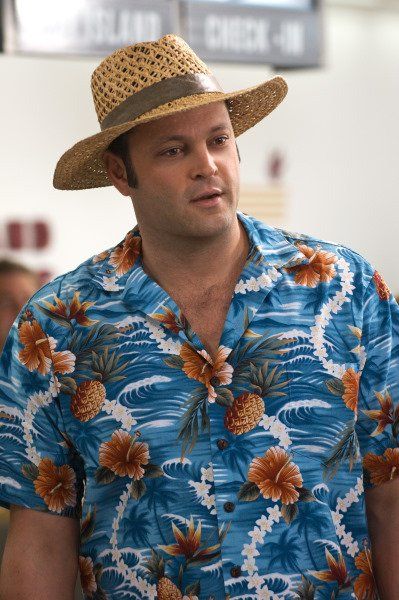
I used to hate that cop movie trope where the officer would lose their badge at the midpoint because they did something illegal but still decide to pursue the case anyway. It was so cliche it actually hurt to watch.
But now I understand why writers do it. It creates a much more interesting character situation. For starters, the character is now acting illegally. So if he gets caught, he’s in a lot more trouble, which of course creates more tension and suspense.
He’s also neutered, like a superhero without his powers, which forces him to be more creative (always force your heroes to be more creative!).
Finally, it allows you to cheat as a writer. There are a lot of rules cops must abide by. But those rules don’t apply if you’re not officially a cop. You wouldn’t go into a dangerous situation without backup for example. But if you’re not officially a cop, you don’t need backup.
I noticed all this while reading Yancy’s story.
I also noticed that Bill Lawrence doesn’t give a crap about impressing readers. His writing style is almost anti-reader. I suppose if every TV project I wrote went to air and became a hit, I wouldn’t worry about readers either. But to give you an idea of what I’m talking about, the first paragraph of the script is 12 lines long!
Here I tell amateur writers they can’t get away with this yet now we have verifiable proof of a professional screenwriting doing so. Like I mentioned, guys, when you have five hits under your belt, Hollywood will let you write your scripts on toilet paper in the comic sans font. Heck, they’ll let you write them in Celtx.
There’s also some very advanced technical stuff going on here. For example, here’s Lawrence writing a highly complicated voice over scenario…
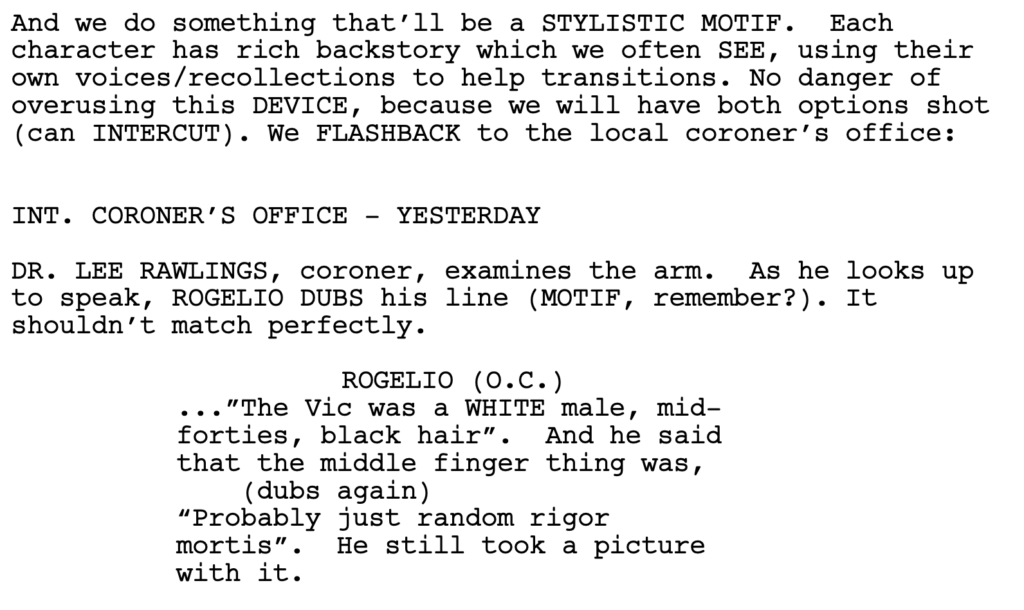
I warn writers away from this kind of stuff only because anything that’s hard to explain might confuse the reader. Too often as writers we think the reader can read our mind. I’ll often tell the writer, save the complex version for when your pilot is purchased and you’re going into production. When it’s still a spec, keep things easy to read. Coming up with some complex voice-over scenario – like something you’d see on Euphoria – it’s too big of a gamble when you’re an unknown dealing with impatient low-level readers.
It’s worth discussing why Bill Lawrence is so successful. Because we’ve seen plenty of writers who write a good show then never write a good show again. What is it that Lawrence is doing differently?
My friends, when it comes to TV, it’s all about the main character. If your main character is the right combination of likable and interesting, we’re going to be on board. Yancy could’ve been written as a deadbeat cop who didn’t give a sh#@ about anyone but himself. Instead, Lawrence kept the lazy morally-questionable womanizing aspect of the character, but balanced it out with a guy who loves doing his job.
It’s such an advantage when your character is active, like Yancy. Because active characters push stories forward. I was talking about this with a writer not long ago. He was wondering if he should write a “Lebowski” type character who didn’t care about anything but chilling and getting high. I told him, if he does that, the character is going to be too passive and hard to root for. The genius about The Dude was that while he preferred to be lazy, the circumstances required he be active.
If Lebowski just sat around all day, we wouldn’t like him at all.
Which is a long of way of saying, find any possible way to make your hero active, even if they don’t want to be. Cause that always creates a better narrative. And here, Yancy can’t help but to investigate this severed arm. Cause he’s a cop at heart.
And by the way, this is why there are more cop shows than any other genre on television. Cops have THE MOST ACTIVE JOB there is. They always have some place to be, some crime to solve, some issue to settle. And as soon as they solve it, they’re handed another one.
Just make sure that if you write a cop show, you check with some people that it’s a unique idea.
[ ] What the hell did I just read?
[ ] wasn’t for me
[x] worth the read
[ ] impressive
[ ] genius
What I learned: Location is a great way to spice up cop show concepts. A cop on the moon. A cop on a tropical island. A cop stationed at the biggest airport in the world. Just like the real estate industry, it’s all about location, location, location!
Are screenwriters even trying anymore?
Genre: Sci-Fi/Action
Premise: An evil corporation charged with protecting dinosaurs uses their research to create a worldwide food collapse and it’s up to some old Jurassic Park friends to stop it!
About: The final film in the Jurassic World trilogy pulled in 143 million dollars. For some reference, Jurassic World, the first film in the new trilogy, made 208 million dollars. The original Jurassic Park made 95 million in its opening weekend when adjusted for inflation. The newest film in the franchise was promoted mainly by the return of legacy characters.
Writers: Story by Derek Connolly and Colin Trevorrow. Screenplay by Colin Trevorrow and Emily Carmichael
Details: 2 hours and 30 minutes
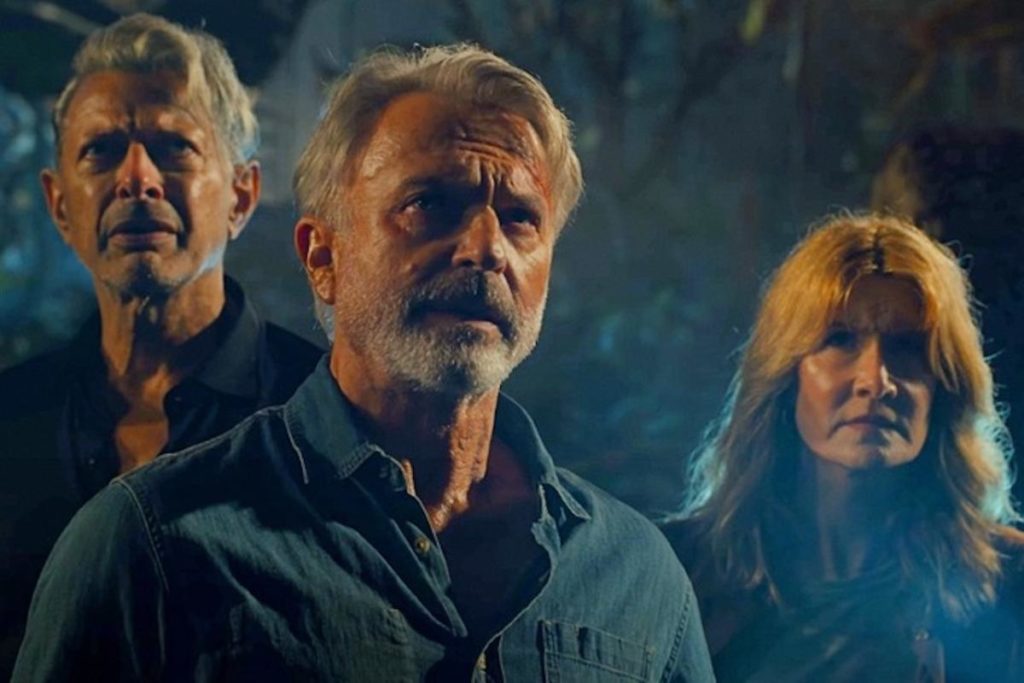
You may be asking yourself, why are you even reviewing this, Carson?
In the landscape of cinema, it’s about as unimportant a big-budget Hollywood release as there is.
There are two reasons.
One, Jurassic Park remains the single best movie concept ever. A theme park with real dinosaurs. There isn’t an idea out there that beats it. So I think that’s worth covering as a screenwriting critic. As much as you want to dig into the weeds on how to write a good screenplay, it all comes down to the idea. If people like your idea, they want to read your script. If they don’t, they don’t.
The second reason is that I’m fascinated by Colin Trevorrow’s career.
He broke through with a decidedly average indie movie, Safety Not Guaranteed. Based on that movie, he got the Jurassic World job. Jurassic World massively over-performed, which led to him getting the Star Wars Episode 9 job. He then made The Book of Henry, which had one of the most ridiculous plots ever known to man. The badly received film got him fired from Episode 9, which left him with nowhere to go. So he came back to Jurassic World for this movie.
But after this film, he no longer has the franchise for cover. He’s out there naked to the world and, therefore, if things don’t go right, he could become the next Joel Schumacher or John McTiernan. So you want to finish the franchise off with a good movie. Because good movies are memorable and you can use that to book jobs.
I know Trevorrow is already set to make an Atlantis movie, which I think is a smart move for him. But if this film’s box office takes a massive dive in its second week because word-of-mouth is so bad, there’s no guarantee that that Atlantis film will be made.
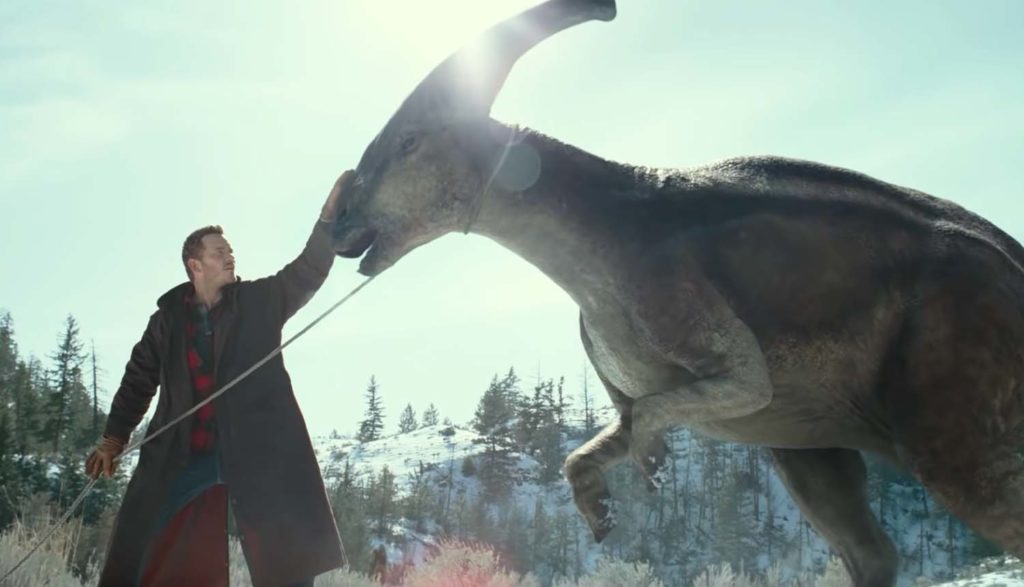 I have no idea what’s going on here.
I have no idea what’s going on here.
So what’s this latest film about?
Oh boy.
I’m going to keep this as short as possible. A company called Biosyn has created a sanctuary for dinosaurs. Also, a new type of Dino-locust (aka a really big locust) is eating up all the crops across the planet. Conveniently, Biosyn has a pesticide that prevents the locusts from eating crops. Buy Biosyn and your crop problems are solved.
Out in the middle of nowhere, Owen (Chris Pratt) and Claire (Ron Howard’s daughter) are raising Maisie, a clone of her mother, who died. The same bad guys who kidnapped Baby Leia also kidnap Maisie. This means Owen and Claire have to find her.
Meanwhile, legacy characters and scientists, Ellie and Allen, are recruited by Biosyn to try and figure out why these locusts are killing all the crops. So they come to Biosyn Headquarters where they meet up with Jeff Goldblum, who I guess is teaching classes there. They eventually also meet up with Owen and Claire, who have tracked Maisie back to Biosyn. The group then escapes, forcing them to take on all the dinosaurs in the sanctuary.

I’ve been noticing a lot of reviews of this movie focusing on the bad writing.
Those reviews are correct.
However, as always is the case with screenwriting, there’s a nuanced discussion to be had. I just think the task here was so big that it overwhelmed the writers, which is why the story is so clunky.
First off, you’ve been told you have to bring in the legacy characters in a significant role. Which means you have to create a parallel storyline for them. And this is where things get messy.
While it’s true that parallel storylines are part and parcel in today’s mega-blockbusters – The Avengers have so many characters, they have no choice but to split them up – the tough part about Dominion is that our current characters in the series aren’t connected to the legacy characters. So it can’t be a collaborative storyline that splits them apart. It has to be separate.
And this is where the bulk of the movie’s problems originate. Alan and Ellie (our original Jurassic Parkers) are wrapped up in an oddly complicated locust storyline whereby if they don’t figure out how to stop the spread of the larger Jurassic locusts, the locusts will single-handedly destroy the planet’s food chain.
Meanwhile, Owen and Claire are involved in a traditional Taken-style storyline where they have to retrieve their adopted daughter. This was actually a smart move by the writers, who must’ve realized how laborious the locust storyline was and figured they had to offset it with the simplest storyline possible.
Ironically, either the director or the producers or someone else wasn’t satisfied by that simplicity, and therefore decided to make the daughter’s storyline evolve into something even MORE complicated than the locust storyline. Without getting into detail, the adopted daughter is a clone who has overcome a deadly genetic disease and, therefore, Biosyn must use her to figure out how to stop the locusts.
You’d think that, at some point, someone would’ve said, “This is just way too complicated.” But once these big movies get moving, they’re like a tidal wave. They’re not going to stop until they hit shore. And whatever they’ve accumulated along the way is coming with.
The crazy thing is, if you break it all down – every single plot development in this movie – it *does* make sense. But therein lies the problem. Audiences don’t come to movies to make sure they make sense. They come to be entertained. So that should always be your primary directive. Sure, you don’t want plot holes. But plot holes are not above entertainment on the movie priority list.
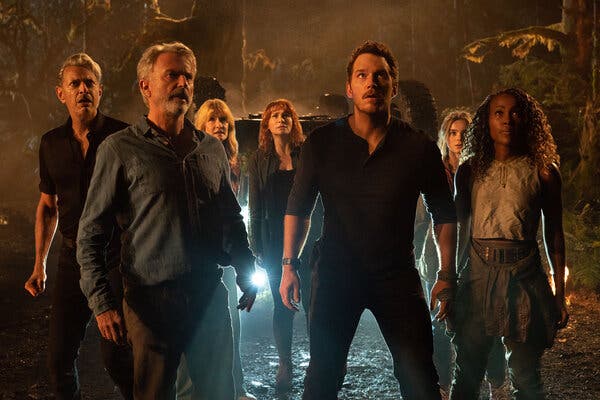
What’s so frustrating is that you could see the writers *trying* to do the right thing. You have the cloned girl, Maisie. The writers went really deep into her backstory and her flaws and her conflicts to create an emotionally complex character. That’s what we’re told to do, right? Create complex characters. So this is right, right?
Or you have Dr. Henry Wu. Dr. Wu is responsible for creating these locusts that will destroy the food supply in order to help Biosyn sell the solution to everyone. He then has a change of heart, realizes what he did was wrong, and attempts to right that wrong by kidnapping Maisie to study her genetic abnormalities in order change the genetic code of the locusts so that they’ll all die off.
Look at how complex this character is. He did something terrible. Now he’s trying to make it right. So he does something terrible again, in an attempt to make it right. Isn’t this exactly what we tell screenwriters to do? Make these complex characters who have all of these conflicts inside of them? They’re both good and bad. That’s proper character construction, right?
In addition to this, we have a brand new character, a sort of Indiana Jones type, named Kayla Watts, played by DeAndra Wise. She’s a pilot with an attitude. Kayla also becomes part of the complex character brigade. She’s been a thug-for-hire her entire career, always chasing the buck over doing the right thing. She stands by as Maisie is kidnapped, has a crisis of conscience about allowing the Jurassic Park version of child trafficking, and decides to help the good guys to right her moral wrong.
Again, on paper, we’ve got a complex character here. I can imagine the writer’s room discussions over this character. How interesting she is for having zero morals her whole life then finally deciding to do the right thing instead of collect a paycheck. I’m sure there were a few people in the room crying about how powerful her arc would be.

So how come not a single audience member cared about these three characters?
There’s an acronym that’s popular in the sports world called “KYP.” It stands for Know Your Personnel. And never has this acronym been more relevant than in regards to this movie. The reason you’ve got three extremely complex characters that nobody is responding to is because they’re the wrong characters. People aren’t coming to this movie to hang out with these three randos.
They’re coming to hang out with Owen, with Clair, with Ellie, with Alan, with freaking Jeff Goldblum. That’s your movie right there. And the fact that you spent all this time building up characters that never stood a chance no matter how well they were written, shows an inability to recognize what people care about.
This is exactly why Top Gun has taken over the world. It recognized that people wanted to see Tom Cruise.
Granted, Chris Pratt’s “Owen” is no Tom Cruise. With that said, there was ZERO attempt to do anything with his character. THE LEAD CHARACTER IN THE FILM! He’s got like 10 lines the whole movie. Yet Boring Indiana Jones Ripoff Girl gets 90% of the dramatic beats in the movie. It was a bizarre decision to say the least.
Speaking of, there was a lot of blowback in the last two movies regarding Owen and Claire bickering with each other. A lot of people called it misogynistic or something. Well, those critics and Twitter users bullied the filmmakers into getting rid of that dynamic. And, in the process, they made Owen and Claire’s interactions the single most boring interactions between two leads you’ve seen in a movie all year.
So the next time you’re thinking of changing something because of people complaining on Twitter, consider what that actually does to the entertainment value of your movie. You’d already neutered Owen as a character. To then neuter his relationship as well… it made these two characters invisible.
I’m not pretending that any of the solutions here are easy. As a screenwriter on a major blockbuster, you’re juggling 10,000 plates. But someone on this team should be reading Scriptshadow. Because I remind people all the time of the best screenwriting advice on the market: KEEP IT SIMPLE STUPID.
The more complex you make your screenplay, the worse it’s going to be.
This film is the latest example of that.
[ ] What the hell did I just watch?
[x] wasn’t for me
[ ] worth the price of admission
[ ] impressive
[ ] genius
What I learned: If you’ve ever been confused by the note, “Too much plot,” watch this movie. This movie is the poster child for “too much plot.” Generally speaking, if almost every scene in your script has your characters explaining something, it means that your plot is too overbearing.
What I learned 2: Be aware of “negative space.” Sometimes as writers we will eliminate a problem in our screenplay but not replace it with a solution. Therefore, what’s left in its place is “negative space.” That’s what happened here with the “bickering couple” criticism that had Trevorrow erase all bickering between Owen and Claire. True, he got rid of the problem. But he didn’t replace it with a solution. He just left negative space. This is the same thing that happened with Jyn Erson in Rogue One. They quickly realized that Jyn came off as “bitchy.” So they erased all moments where Jyn was bitchy. They got rid of the problem. But they didn’t come up with a solution. This is why Jyn Erso is one of the most forgettable Star Wars characters ever. You can’t just erase the problem. You gotta replace it with a solution.

The longer I do this, the more convinced I become that the “in the moment” story is more important than the overall story. What do I mean by that? As long as the story going on in the current scene is entertaining, you’re going to keep the reader hooked. Because if I’m entertained by the first scene and then I’m entertained by the second scene and then I’m entertained by the third scene, and so on and so forth, I’m going to want to keep turning the pages until the script is done.
However, if the individual scenes are hit or miss (I’m entertained by the first scene, I’m bored by the second scene, I’m kinda entertained by the third scene, I’m bored again by the fourth scene) it won’t matter how good the overall story is. Because the pieces within that story are struggling to keep my attention. And as anyone who’s read scripts knows, we don’t finish reading scripts like that.
This begs the question, how do you make each and every scene entertaining? Who out there has the ability to write a good scene EVERY TIME OUT? Isn’t that an impossible standard to live up to? If you’re going by the odds, some of your scenes have to be bad. Right?
Wrong.
This is a toxic way to think.
While it’s true that not every scene can be great – even scenes from some of our favorite movies suck – there’s a method you can use to ensure that your scenes will rarely, if ever, be bad. And by using this method, your likelihood of writing a good scene goes up exponentially.
The method I’m talking about is built around the idea of CONFLICT.
Now we’ve been told ad infinitum that our scenes need conflict. The problem with this advice is that that word is vague and unhelpful when you’re constructing a scene out of thin air. So I’m going to help you see conflict in a new way. And this way should help your scene-writing dramatically.
From now on, I want you to look at every scene as requiring a POSITIVE CHARGE and a NEGATIVE CHARGE. If you live by this simple rule, every scene you write is going to have conflict. Conflict, of course, naturally results in drama. And drama is the magical component that ENTERTAINS audiences.
Let’s look at the simplest version of this – positive character, negative character.
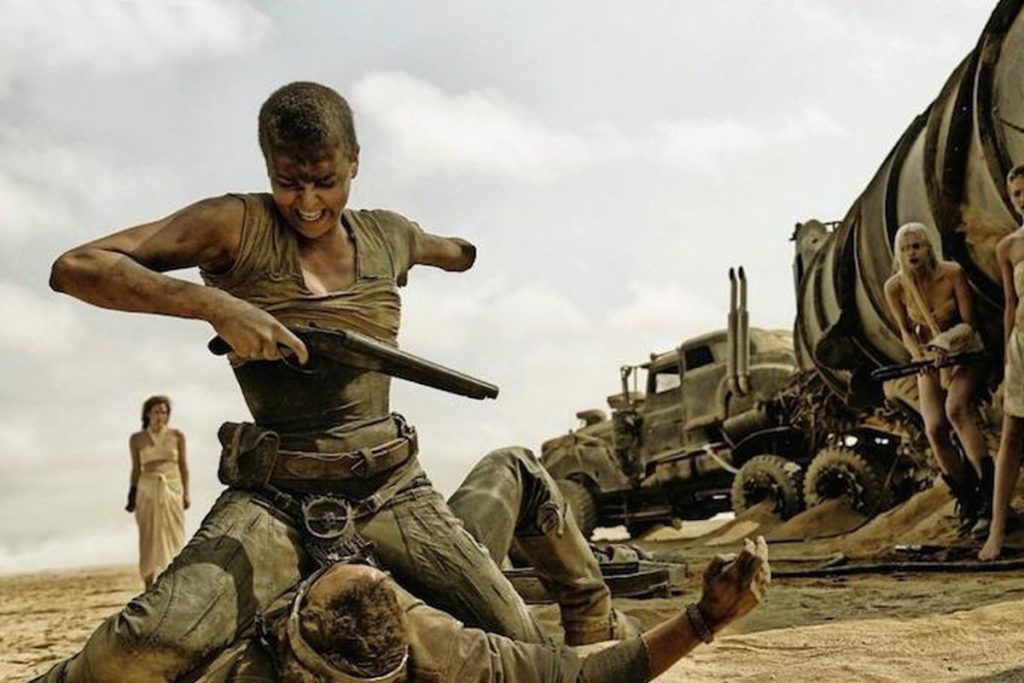
If you watch a movie like Fury Road, you have lots of scenes with your positive charge character, Furiosa – she’s trying to save a group of people – going up against your negative charge character, Mad Max – who’s trying to escape. Every scene between these two characters is entertaining because those opposing charges are always on display.
This is a great way to ensure that most of your scenes will be entertaining. You simply take the two characters who are going to be around each other the most in your movie and you assign one of them a permanent positive charge and the other a permanent negative charge. This guarantees that every scene these two are in is going to have some level of conflict, which is why the scene will probably be good.
This can work especially well if your narrative is purposefully flat. A great example of this would be the movie Sideways, which follows two friends up to Napa Valley for the weekend. It’s not a plot movie by any means. But the two friends were Jack (positive charge) and Miles (negative charge). Their essence as humans was so embedded in that positive or negative belief system that they didn’t need plot to be entertaining. They just needed to be around each other.
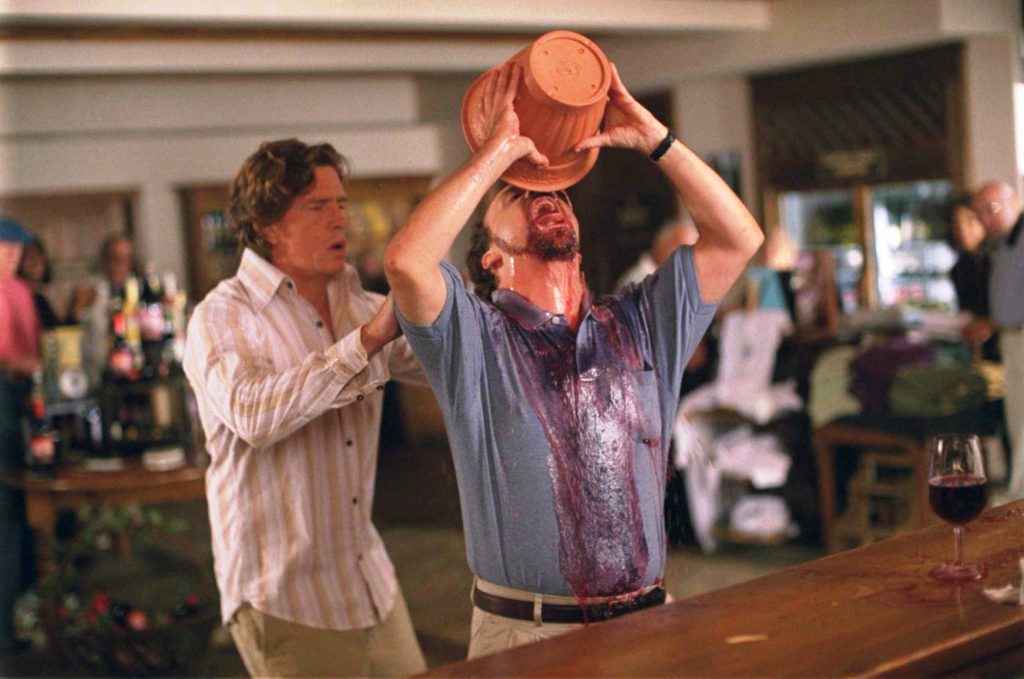
Unfortunately, not all of us are interested in writing buddy cop movies or road trip movies. Which puts you in a more difficult position. Because now instead of the positive and negative charges automatically being there for you in every scene, each scene requires you to find a new positive and negative charge.
This is where screenwriting gets tough. Because each scene becomes a unique challenge to find the charges. And if you’re lazy, you won’t bother doing so. But luckily you have me and I can give you some direction. The second type of positive-negative charge is TEMPORARY CHARGES.
In this scenario, your characters may or may not be carrying permanent positive or negative charges, which means the scene itself must be constructed in a way to give each character in the scene a positive and negative charge.
The most obvious example of this is Character A is mad at Character B about something and lets them have it. Character A is our negative charge (he’s mad!). Character B is our positive charge (he’s trying to defend himself and calm A down). To be clear, Character A may be a positive person throughout the rest of the script, but right now he’s mad, so he becomes the negative charge for the scene. That’s the thing with temporary charges. You can construct them for the moment. They don’t need to be attached to the character’s permanent identity if the scenario calls for it.
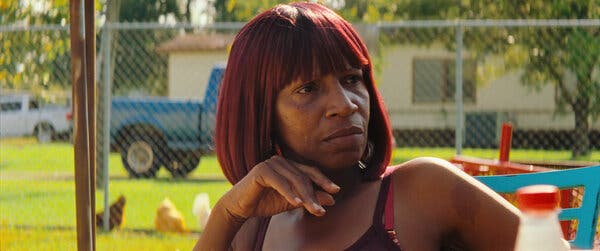
But anger isn’t the only negative charge in your Charge Arsenal. I recently watched a movie called Red Rocket. A great film. It’s going to be one of my favorite films of the year. It’s about a former porn star, Mikey, who moves back to his Texas hometown with no money. One of the early scenes has him going to Leondria, a drug dealer, to see if he can sell weed for her.
This is a very simple example of a temporary positive charge temporary negative charge scene. Mikey is the positive charge. He’s trying to get something to better his life – make money so he can move back to Los Angeles. And Leondria is the negative charge. She’s suspicious of Mikey. She’s also potentially dangerous. She doesn’t really want him selling for her. That’s what makes the scene entertaining, is the positive charge being forced to interact with the negative charge.
And by the way, if you want to see a masterclass in positive-negative charges, go watch Fargo (the film). The reason almost every scene in that movie is a classic is because that’s all the Coens focused on back then, was positive and negative charges.
Okay, let’s get a little more nuanced now. Let’s say that you have two characters who get along. Which means, in the majority of their scenes together, they’re both going to be positive charges. This will usually happen when two characters fall in love. So now what? How do we create conflict if two people are on the same page?
Simple. We introduce a negative charge EXTERNALLY. Romeo and Juliet is the perfect example of this. Romeo and Juliet are both positive charges. But their families are both negative charges. Which means you just have to bring a family member (negative charge) into a scene to create conflict. Or, in some cases, just the threat of Romeo and Juliet being caught out with each other can be a negative charge. Think about it. These two aren’t hanging out without a care in the world. They’re hanging out always having to look over their shoulders. Why? Because behind their shoulders is that looming negative charge.
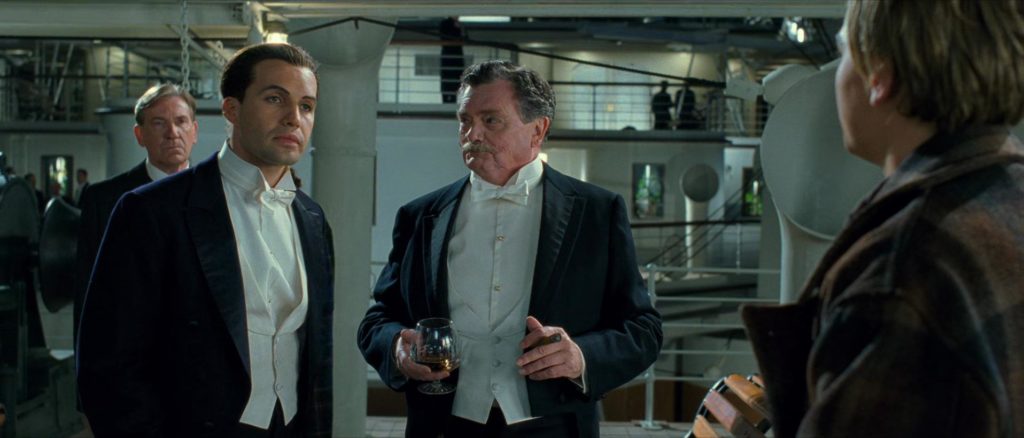
This is what James Cameron did with Titanic as well. At first, Jack and Rose were opposing charges. He was positive (trying to get her) and she was negative (she was resisting). But once they got together, they both became positive. And that meant Cameron had to create a series of external negative charges to keep their scenes entertaining. He did this with Cal Hockley, Rose’s fiancé. He did this with Hockley’s undertaker assistant, who chased them around. And he eventually did it with the ship itself – the sinking and all the problems it created were the primary negative charge in many of their scenes.
Now here’s a question for you. What if you only have one character in a scene and he’s not in a scenario where he’s opposite a negative charge? How do you create the necessary conflict to ensure an entertaining experience for the viewer? This is where writing gets fun. You create the charge FROM WITHIN. One charge will be the external and the other charge will be the internal.
So let’s take a look at Arthur Fleck, the Joker. The reason that Arthur looking in a mirror can be a compelling scene all on its own is because externally he’s struggling to be happy (negative charge). Yet internally, he’s desperate to be happy (positive charge). Which is why he’s shoving his fingers into the sides of his mouth and forcing them up. He wants to smile but he can’t.

If the Joker were to smile and there was no resistance at all, there’d be no conflict. So the scene wouldn’t be dramatic. Hence, the importance of opposing charges.
All of this boils down to when you’re in a scene, ask yourself, where is the positive charge coming from and where is the negative charge coming from? If you have that in place, there’s a good chance you’ll write an entertaining scene. The reason I say “good chance” and not “guaranteed” is because screenwriting is composed of too many variables that affect each scene.
Take a look at the Obi-Wan Kenobi show. Many of the scenes in the second episode followed the rules I laid out above. They have Obi-Wan in them, our positive charge (he’s rescuing Baby Leia), and Baby Leia, who represents our negative charge (she resists his help and is not thankful). These scenes should work according to me. Both characters have an inherent opposing charge. Why, then, do the scenes suck? They suck because Baby Leia is a poorly written character. We don’t like her. We don’t want to be around her. Even the most well-constructed version of conflict in a scene will fail if we don’t like (or are interested in, or care about) one of the characters in the scene.
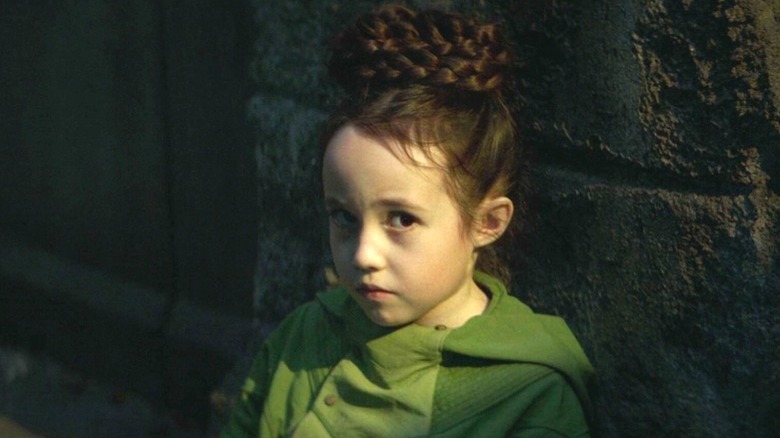
So obviously, other parts of your screenplay need to be on point. But at least now you know that if you inject that positive and negative charge into every scene, there’s a good chance you’ll write a dramatic scene. And since drama equates to entertainment, we’re going to be invested in each and every one of your scenes. Go forth and try this in your current script and watch how much better your scenes get.

